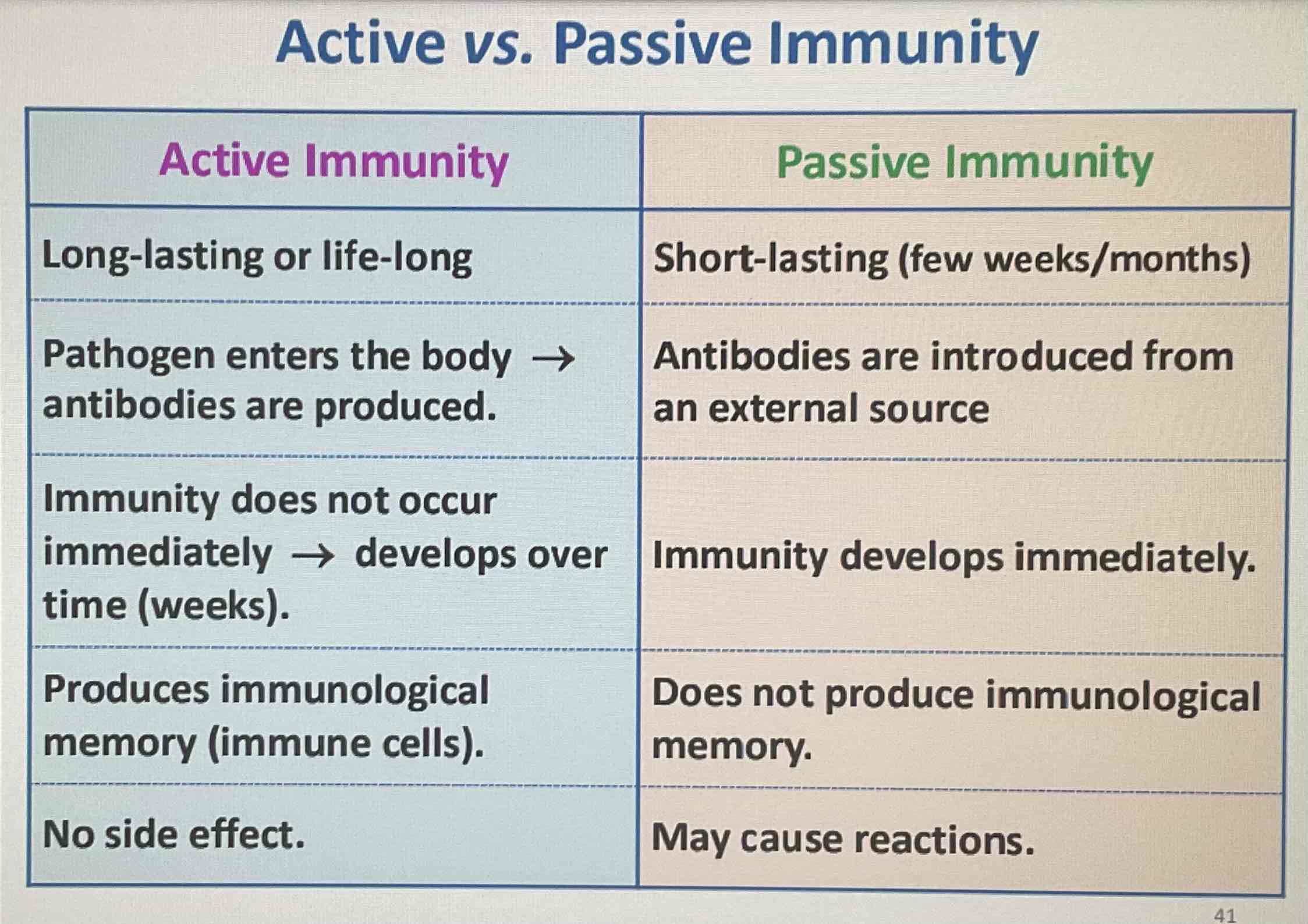LU2.2 Innate Immune Response
1/11
There's no tags or description
Looks like no tags are added yet.
Name | Mastery | Learn | Test | Matching | Spaced |
|---|
No study sessions yet.
12 Terms
What are the functions of immune response?
Recognition of pathogen
Elimination of pathogen
What are the different type of immune responses?
Innate Immunity (Natural, non specific, non adaptive)
Acquired Immunity (adaptive, specific)
What are the three line of defence against infection?
First line of defence : skin & mucous membrane
Second line of defence : fever, phagocytes, inflammation
Third line of defence : antibodies and lymphocytes
What is innate immune response?
involves non-specific responses to pathogens
present before any exposure to pathogens
effective from time of birth
represents first line of active defense against invading pathogens
What are the components of innate immune responses?
physical barriers
macrophages
neutrophils
eosinophils
mast cells
NK cells
complement
cytokines
What are the major systems of innate immune response?
Natural barriers
Inflammatory responses
Phagocytic responses
How can innate immune response be accomplished?
It can be accomplished in 5 stages
i) Recognition of pathogens
ii) Recruitment and activation of immune cells and complement proteins
iii) Elimination of pathogens and spread of infection
iv) Resolution of infection
v) If elimination incomplete, induction of adaptive IR occurs
How can fever aids in innate immune response?
fever is a natural defence mechanism
fever is caused by endogenous cytokines released by monocytes
fever inhibits the infecting microorganisms by increasing body temperature
What are the microbial effects of fever?
High body temperature impairs growth of pathogenic microorganisms
In a resting condition, body energy activates phagocytic cells and lymphocytes (T-cell)
Immune cells are stimulated at high body temperature
What is mucociliary apparatus / clearance?
it is a major barrier against infection (second line of defense)
it have two parts : i) mucus-producing goblet cells ii) ciliated epithelium
What is the difference of innate and adaptive immunity?

What is the difference of active & passive immunity?
